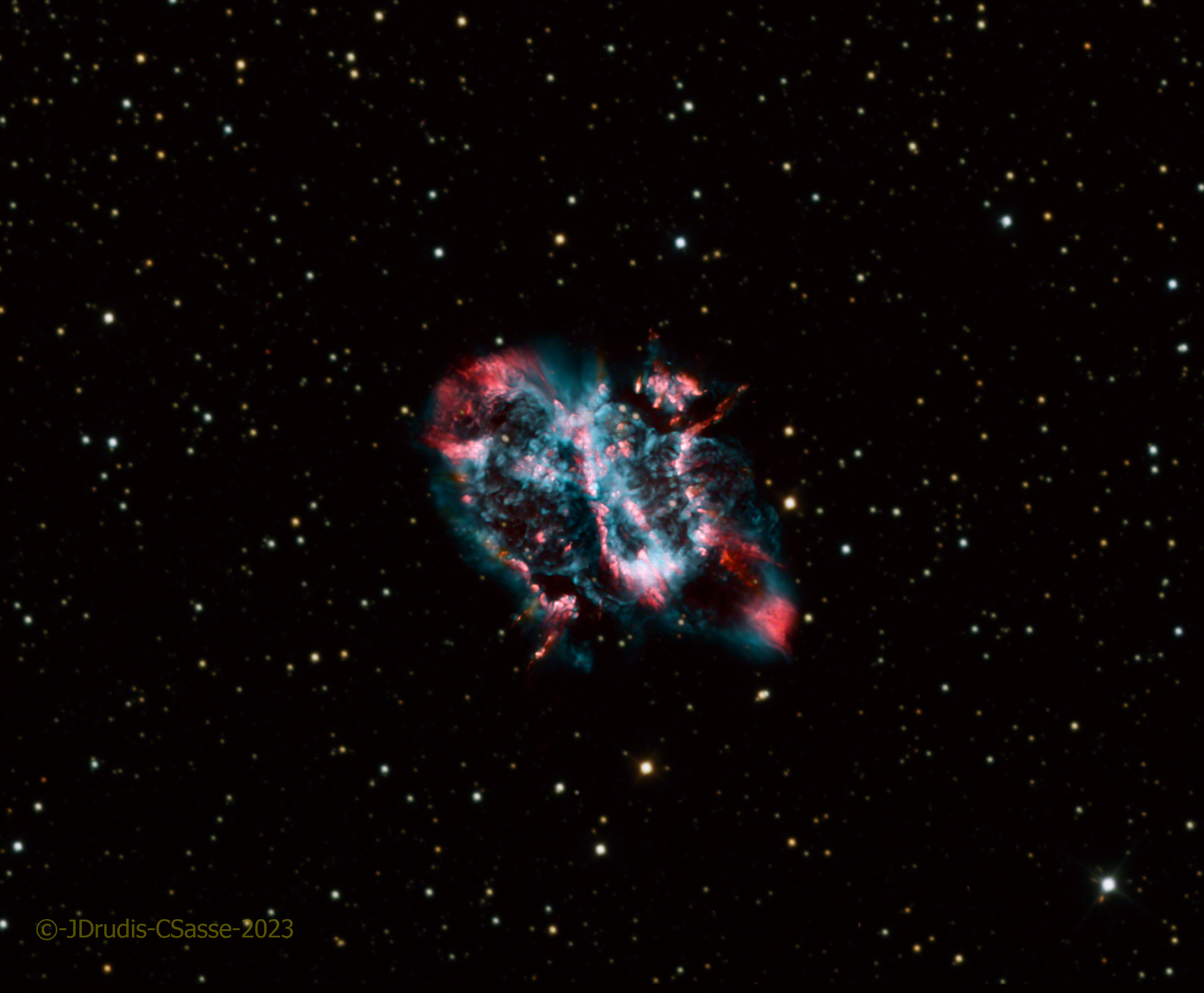Click on the image for a full resolution version
 See this image also on Instagram
See this image also on Instagram
NGC 5189 is also known as IC 4274 or the Spiral Planetary Nebula. Located at about 3,000 light years away, in the constellation Musca, this nebula was thought for 140 years to be an emission nebula until K. Henize, in 1967, studied its spectrum and determined it to be a planetary. The S-shape and the presence of many point-symmetric structures gave rise to different speculations as for the cause of them, mostly proposing that a binary system was at the center of the nebula. R. Manick et al. in 2015 found the solution, a binary system is indeed at its center and is formed by a low mass Wolf-Rayet (WR) star, type WO, and a smaller companion (with a mass estimated between 0.5 and 0.9 solar masses) that seems to be a white dwarf. Another unusual property is that the pair orbit each other with a period of 4.04 days, which is large for this type of binary cores in planetary nebulae.
This image is a joint project with Christian Sasse and was taken with narrowband filters (Ha, [OIII] and [SII]) and color mapped to the Hubble color palette (first image) and also to natural color (second image). The stars were taken with short RGB exposures. There is an iconic image of the Hubble Space Telescope (see below, image credit and copyright: NASA, ESA and the Hubble Heritage Team (STScI/AURA)).
Additional Information
Object
Name(s): NGC 5189. IC 4274. Spiral Planetary Nebula
Type: Planetary Nebula
RA: 13h 33m 33s
Dec: -65º 58’ 27”
Constellation: Musca
Size (arcmin): 62×90 arcsec
Magnitude: +8.2
Distance: 3,000 ly
Image
Date: 2023-02-09 to 2023-02-19
Location: Obstech, Río Hurtado, Chile
Size (arcmin): 8.5×6.9 arcmin
Telescope: 24” f/6.5 Reflector
Camera: QHY 461 (11760x8896pix)
Guiding: off-axis guider
Total exposure: 39 hours (Ha: 15h 20m; OIII: 11h 20m; SII: 9h 20m; RGB: 3h)
Processing: CCDStack, PixInsight (one process) and Photoshop CC 2023


